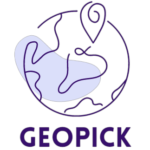Introduction:
Web mapping APIs have become essential tools for creating interactive and dynamic web maps that provide valuable insights for various industries and applications. However, with numerous APIs available, selecting the most appropriate one for a specific project can be challenging. To aid in this decision-making process, a comparison was made between three widely used JavaScript Mapping APIs: ArcGIS JavaScript API, Google Maps API, and Leaflet, based on five criteria that are critical for evaluating web mapping tools.
User-friendly design:
The first criterion evaluated is user-friendly design. This criterion is essential for enhancing the user experience, and it encompasses the ease of use, accessibility, and customization options of the APIs. The analysis revealed that all three APIs offer user-friendly interfaces, intuitive controls, and extensive customization options. However, the ArcGIS JavaScript API and Google Maps API provide better accessibility features, including support for assistive technologies and alternative navigation methods.
Support and Documentation:
The second criterion evaluated is support and documentation. This criterion is critical for maintaining and scaling mapping applications, and it encompasses the level of support, quality of documentation, and licensing and cost implications of the APIs. The analysis revealed that all three APIs offer comprehensive documentation and support, with a variety of resources, tutorials, and communities available. However, the Google Maps API has more restrictive licensing and cost implications, which could limit its use for large-scale or commercial projects
Scalability and Performance:
The third criterion evaluated is scalability and performance. This criterion assesses the APIs’ ability to handle large or complex datasets, their speed and efficiency, and their integration with other tools. The analysis revealed that all three APIs offer high performance and scalability, with the ArcGIS JavaScript API providing the best support for large and complex datasets, and Leaflet offering the most extensive integration options.
Community Support:
The fourth criterion evaluated is community support. This criterion evaluates the availability of online forums and resources, third-party plugins or extensions, and the level of community engagement, which can influence the APIs’ sustainability and further development. The analysis revealed that all three APIs have active communities, with numerous resources and plugins available. However, the Google Maps API and ArcGIS JavaScript API have more extensive communities, with more diverse resources and active developer communities.
Technical Capabilities:
Finally, the technical capabilities criterion was evaluated, which assesses the APIs’ ability to handle different data formats, provide interactive data features, and support various representation methods. While this criterion is discussed briefly in this comparison, it is important to note that a more detailed comparison of the sub-criteria is available on individual pages for each API. These pages describe the capabilities and limitations of each API in detail, and can provide valuable information for those interested in a more technical analysis.
Conclusion:
In conclusion, this comparison provides insights into the strengths and weaknesses of the ArcGIS JavaScript API, Google Maps API, and Leaflet, based on five essential criteria for evaluating web mapping tools. Ultimately, the selection of an appropriate API should consider specific project requirements, available resources, and user preferences.
Further learning:
To further your understanding and skills in using ArcGIS JavaScript API, Google Maps API, and Leaflet, here are some resources you can use. By utilizing these resources, you can continue to enhance your skills and knowledge in web mapping using these powerful tools.
Documentation:
Community resources:
ArcGIS Maps SDK for JavaScript:
Google Maps API:
Leaflet
References:
- ArcGIS Maps SDK for JavaScript documentation: https://developers.arcgis.com/javascript/latest/
- Chow, E. and Yuan, Y. (2019). GIS APIs. The Geographic Information Science & Technology Body of Knowledge (2nd Quarter 2019 Edition), John P. Wilson (Ed.). doi: 10.22224/gistbok/2019.2.15. Available online: https://gistbok.ucgis.org/bok-topics/gis-apis
- Chow, T. E. (2008). The potential of maps APIs for Internet GIS Applications. Transactions in GIS, 12(2), 179-191. doi: 10.1111/j.1467-9671.2008.01094.x Available online: https://onlinelibrary.wiley.com/doi/10.1111/j.1467-9671.2008.01094.x
- ESRI. (2018). ArcGIS Developer Program Pricing. Retrieved Dec 7, 2018, from ArcGIS for Developer: https://developers.arcgis.com/pricing/credits/
- Google. (2018). Pricing for Maps, Routes and Places. Retrieved Dec 7, 2018, from Google Cloud: https://cloud.google.com/maps-platform/pricing/sheet/
- Google Maps API documentation: https://developers.google.com/maps/documentation/javascript
- Huang, P.-Y., Jan, J.-F. (2011). Comparison of Google Maps API and OpenLayers for WebGIS Development. Department of Land Economics, National Chengchi University. Available online: https://a-a-r-s.org/proceeding/ACRS2011/Session/Paper/P_444_9-8-19.pdf
- Leaflet documentation: https://leafletjs.com/reference.html
- Leaflet. (2023). Leaflet – a JavaScript library for interactive maps. Retrieved January 10, 2023, from https://leafletjs.com/
- Roth, R. E., Donohue, R. G., Sack, C. M., Wallace, T. R., Buckingham, T. M. A. (2014). A Process for Keeping Pace with Evolving Web Mapping Technologies. Cartographic Perspectives, 78, doi: 10.14714/CP78.1273. Available online: https://pdfs.semanticscholar.org/596f/e484b4131a780f55c33fca232723bac7fd50.pdf?_ga=2.248952839.1898310656.1674741411-1331937652.1672672925
- Schmidt, M., & Weiser, P. (2012) [online]. Web mapping services: development and trends. In M. Peterson (Ed.), Online maps with APIs and WebServices (pp. 13–21). Berlin Heidelberg: Springer. ISBN: 978-3-642-27484-8. Available online: https://citeseerx.ist.psu.edu/document?repid=rep1&type=pdf&doi=5f0a448c9d22e5f22705edaa2effcc0bee4defda
- Socharoentum, M., Karimi, H. A. (2014). A Comparative Analysis of Routes Generated by Web Mapping APIs. Cartography and Geographic Information Science, 42(1). doi: 10.1080/15230406.2014.976656. Available online: https://www.researchgate.net/publication/268209003_A_Comparative_Analysis_of_Routes_Generated_by_Web_Mapping_APIs
- Yue, P., Ramachandran, R., & Baumann, P. (2015). Intelligent GIServices. Earth Science Informatics, 8(3), 461-462. doi: 10.1007/s12145-015-0237-z Available online: https://link.springer.com/article/10.1007/s12145-015-0237-z

